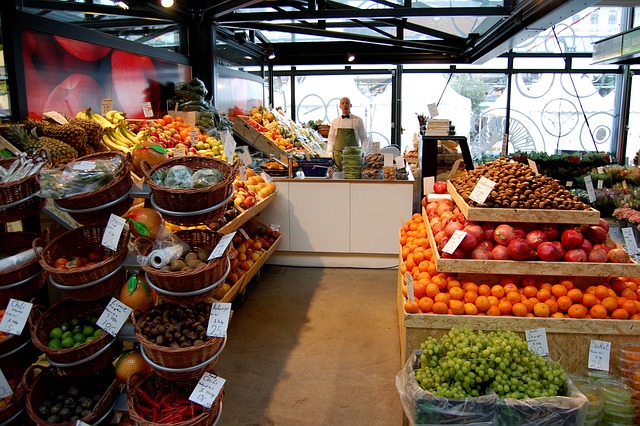 Understanding consumer preferences is critical to unlocking growth in any business. It doesn’t matter whether your company only targets the local market or has a global reach. You’d do well to research key behavioral aspects of your customers and prospects, which you can use to gain a competitive edge.
Understanding consumer preferences is critical to unlocking growth in any business. It doesn’t matter whether your company only targets the local market or has a global reach. You’d do well to research key behavioral aspects of your customers and prospects, which you can use to gain a competitive edge.
Among those factors include their age demographics, geographical location, shopping trends, and sociocultural biases that could shape their opinions about your product.
Fortunately, we’ve rounded up the top consumer habits that every retailer must know. Keep reading to learn how to leverage each behavior to get ahead of the competition and attain solid market dominance in 2024.

1. Most Consumers Would Rather Search for Products Online
There’s no denying that the Internet has revolutionized the commerce industry tremendously.
A few years back, the online retail landscape was dominated by service-based businesses, such as consultancy firms. But today, the industry appeals more to consumer goods retailers, including grocery stores, boutiques, and electronics dealers.
The internet boosts engagement for retailers through innovative solutions like chatbots. It also serves as a treasure trove of information for consumers looking for insights into a product before purchasing it.
Research indicates that 87% of shoppers begin their product searches online. These statistics underscore the significance of implementing robust search engine optimization (SEO) campaigns.
Engaging an SEO specialist can help your business achieve higher rankings on search engine result pages (SERPs). This will further make your brand discoverable by online users searching for products and services in your niche.
Besides SEO, you might also want to invest in e-commerce information technology (IT) solutions that offer tailored retailer and consumer solutions. The mission of such solutions is to transform the core operational aspects of your business by primarily targeting the financial and IT sectors.
2. Consumers Insist on Multiple Payment Gateways
Cash remains the most popular payment option for brick-and-mortar shoppers, at least for the 13% of consumers who still prefer this route. It’s more convenient than credit and debit cards, especially in areas with limited ATM distribution.
However, remember that most shoppers prefer to conduct their product searches online. A significant percentage of these searchers culminate in actual purchases.
When ordering their products online, shoppers love to experiment with multiple payment methods. As a retailer, you can offer your consumers a unified shopping experience by blending your online store with its physical version. This gives them more control regarding product range and the payment method.
Customers may pay for their orders using digital payment methods like PayPal on one occasion and then shift to credit cards on their next shopping spree. You might also introduce cryptocurrency payments to target bulk-buying customers whose purchases may exceed your credit card or PayPal limits.
Implementing multiple payment methods allows you to tap into diverse interests. It’s an ingenious way to address the scourge of bounce rates, thereby improving revenue generation.

3. Overall Customer Experience Matters Nearly As Much As Product Quality
The most effective marketing strategy is offering high-quality products and services. It’s the surest way to attract repeat clients while also generating more leads through positive reviews.
However, recent statistics suggest that a majority of shoppers take the overall customer experience seriously. Achieving an excellent customer experience requires a multi-pronged approach focusing on human resource and technology solutions.
Start by engaging a team of duly trained and highly professional staff. Pay particular attention to employees working in your company’s customer-facing dockets, such as support, sales and marketing, and public relations.
Second, invest in technological solutions that make your offerings more discoverable. Reputed providers deploy powerful artificial intelligence (AI) algorithms to match potential consumers with the right products based on their profile information or recent shopping trends.
You can also integrate contactless deliveries into your business to automate certain processes and further improve efficiency. Such interventions are particularly effective in self-care stores and restaurants.
Don’t forget to leverage the power of demand forecast tools. These solutions let you predict demand based on market dynamics like seasonality. You can use the insights obtained to replenish stock as required, giving your customers continuous access to your offerings.

4. Consumers Prefer Ethically and Organically Sourced Products
The fact that we’re living in the disruptive age of the internet has enlightened the modern consumer remarkably.
Initially, quality assurance was the primary thing that mattered to consumers. Then came the overall shopping experience along the way.
Today, many shoppers would also want to know how a product ended up on a retailer’s shelves. And one of the easiest ways they do that is by checking product packaging material.
A study found that 77% of consumers view sustainability and environmental responsibility as key brand values. Similar findings by Harvard Business School have shown that shoppers are more than five times more likely to buy sustainable products.
Using technology, you could develop innovative product packaging ideas to capture the interest of shoppers looking for sustainably sourced goods. You could also establish meaningful collaborations with organic growers to ensure nothing but all-natural products end up on your shelves.
5. Consumers Trust Influencers
Influencer marketing has garnered tremendous attention in recent years. According to Statista, the global influencer marketing market was valued at USD 21.1 billion in 2023.
These statistics point to consumers' incredible amount of trust in influencers. Simply having your products recommended by a third-party blogger, vlogger, or social media user can boost your company’s revenues and brand appeal.
However, note that influencer marketing delivers the most results if you partner with marketers in your niche. So, research influencer marketing platforms like Hype Factory and Influencity to find authority figures in your industry for potential collaboration.
These platforms provide insightful data that you can leverage to determine an influencer’s suitability for your needs. That includes their target audience, content style, and number of followers.
Implementing different endorsement methods is another way to leverage influencer marketing to boost your brand. Break away from the tradition where an influencer simply hypes your offerings on their blogs through product mentions and backlinks. For example, influencers showcasing snow camo in action-packed outdoor settings can create a more authentic connection with their audience.
Instead, opt for a more realistic approach where the marketer posts images or video evidence of them using your products in real life.

Research and Leverage
The first step in getting ahead of the competition is researching your consumers’ shopping trends and behaviors. We hope you can leverage the above-listed consumer habits to align your marketing and customer services accordingly.